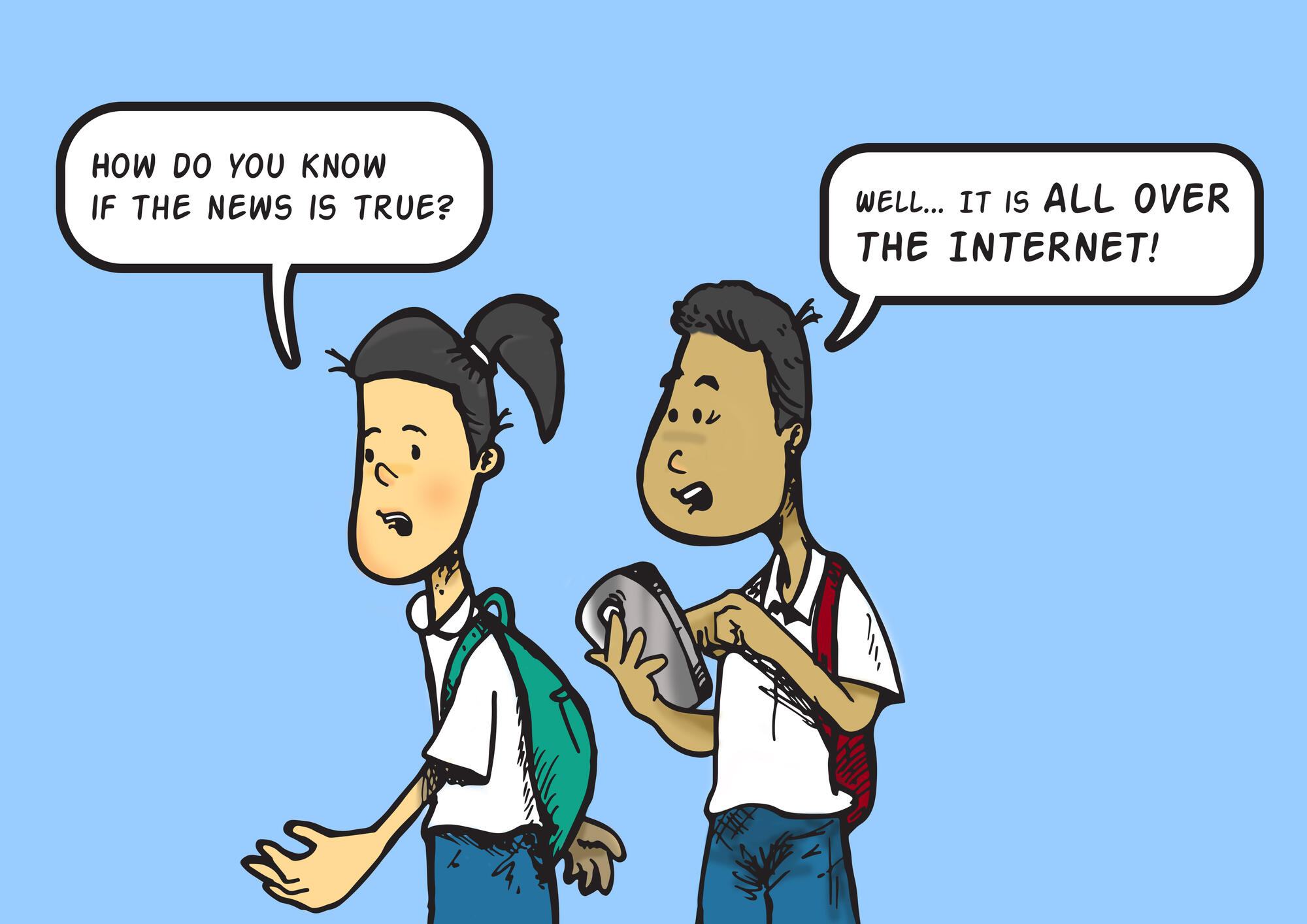“Supermarket jasmine rice made of plastic!” Aiyoh! “Your mobile phone has been used for illegal activities! Give us your personal details to check…”
You must have seen these circulating online or in various Whatsapp groups. Did you believe them? Did you pooh-pooh them? Or did you do the smart thing and think it through?
Through sensationalised headlines and clever manipulation of images, lies can easily be disguised as truths. And they spread virally, because people assume they are true and want to share the juicy gossip fast.
As parents, how can you help your child discern what’s real and what’s not? MOE’s Guidance Branch shares a few tips.
Encourage your child to:
-
- Question the source of information 1If your child comes across an unfamiliar website, encourage him to check the “About” section if there is one. Find out who the website owners are and what they represent, if necessary, track it back to original sources by doing an online search with keywords from the article/site content.
- Question the source of information 2Scan the website and look out for tell-tale signs that hint that it is meant to mislead. For example, if the URL link is trying to pass off as one from an authentic news website. Some websites are known to publish articles by their users without verifying the accuracy of the content. When reading from these websites, treat the information with a healthy dose of scepticism and always check against other sources.
- Go beyond the surfaceEncourage your child to go beyond the “wow!” headline to read the main text. Look for facts rather than opinions. Find out what others are saying about the piece of news by cross-checking with sites such as www.gov.sg/factually or www.scamalert.sg, which has a database of local scams to watch out for. If the article cites a source, check the source itself to make sure it’s authentic and accurate – journalists have been fooled before – and that the article has stated the claims correctly.
- Speak out
It’s common to come across news alerts that may be fake from friends and even family. Trusted friends may sometimes let their guard down and share what they assume to be real news without verifying. Even if the information comes from a friend or family member, encourage your child to fact check with other information sources and step forward to debunk anything that is fake.
Guide your child by:
-
- Identifying what is credibleFamiliarise your child with credible news websites and help him identify what is quality information. Instead of depending on one or two sources of information, encourage your child to read how different major news outlets report on the same piece of news. Have regular conversations with him on how to rate the information he receives. When your child has a strong foundation in finding and assessing information, he will be more confident to navigate the Web.
- Co-viewing the contentWhen children are younger, it’s good to read through content together with them. As you do this, share how you would evaluate the information you read. For example, point out why you might avoid clicking a certain link because it could be a fake advertisement leading to a malicious website. Or explain why you are checking if an article is sponsored, so that you are aware if the writer was paid to write in a certain way on the subject.
- Focusing on being digitally wise
Yes, your child is digitally savvy. He’s able to navigate different social media platforms with ease. But does that mean he is digitally wise? Being digitally wise involves having the skill to assess information, and be guided by values such as caring and respecting others. Encourage him to make responsible decisions when responding to what he reads online.






.jpg)